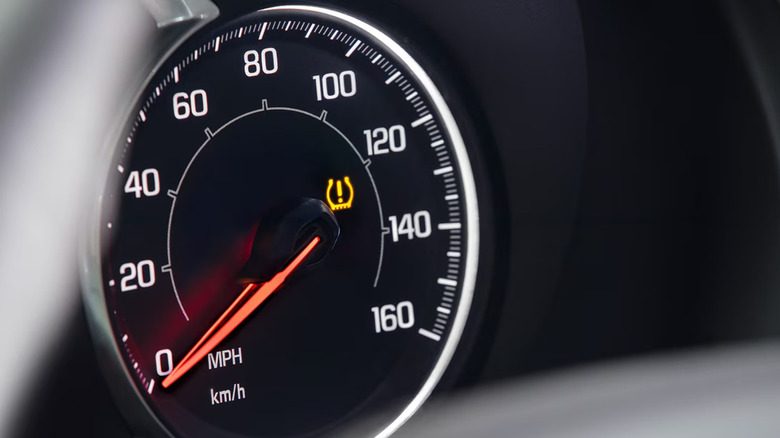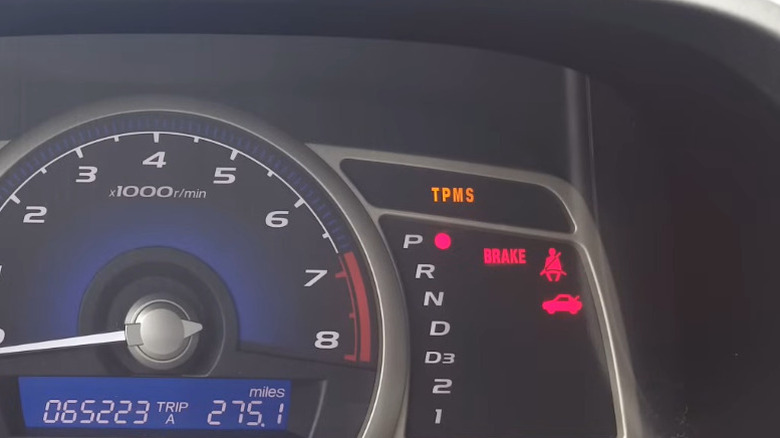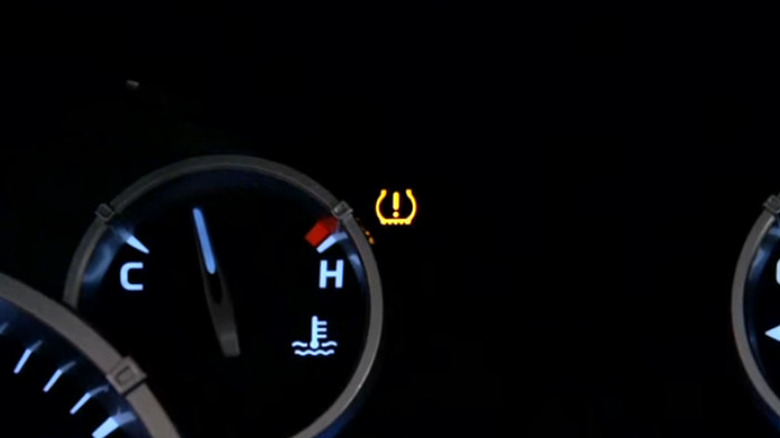TPMS Light Vs. Tire Pressure Light: What's The Difference?
Among your car's many safety features, one of the systems you might frequently deal with is the tire pressure monitoring system, commonly known as TPMS. It makes sure your tires and the monitoring system itself is in tip-top shape, so you can get to your destination safely.
How the tire pressure monitoring system works is simple: sensors are installed in the tires and are constantly watching whether the ambient pressure is falling below a certain threshold. If it does for any one of the tires, the sensor for that specific tire triggers an icon on your dashboard to inform you of this. A trigger to turn on the dashboard light is also sent whenever the system starts malfunctioning for whatever reason.
But what exactly is this icon/light that shows up on your dashboard? You might actually see two kinds: the TPMS light and the Tire Pressure light. Let's look at how they differ and what you should do when you see each one.
TPMS and Tire Pressure dashboard icons on older vehicles
On some old cars, like the 2006 Honda Pilot, there are two separate indicators related to your tire pressure monitoring system (TPMS). The first is the Low Tire Pressure light, which looks like a horseshoe with an exclamation point inside. The second is the TPMS light, which just plainly shows the letters TPMS on your dashboard. Both indicators temporarily light up once you start the ignition, but if they remain lit once you start driving, something is amiss with either your tires or the TPMS itself.
If it's the Low Tire Pressure light that pops up, that means at least one of your tires is below the recommended pressure. Slow down to a stop when you can and check which of your tires are underinflated. If it isn't punctured, blown out, or damaged in any way, try putting in air to increase the pressure. You can check what your tire's pressure should be by looking at the tire info sticker on your driver's door.
If you can't inflate your tire, just replace it with the spare or call a tow truck to take you to the nearest service center. Keep in mind, though, that the spare tire doesn't have a TPMS sensor. So, even after installing it, the Low Tire Pressure light will still be on as the TPMS couldn't detect a properly inflated tire on the wheel.
On the other hand, if you see the TPMS light instead of the Tire Pressure indicator, it's a sign that the TPMS system itself isn't working as expected. You need to have a professional check it; otherwise, you risk driving without knowing whether your tires are at the right pressure at any given time.
Is there a TPMS light on newer cars?
In modern cars, the TPMS malfunction and low tire pressure warning are both integrated into the same Tire Pressure light (horseshoe icon with exclamation point). So no, you usually won't see the letters TPMS show up on your dashboard. But then, how will you know whether the icon is telling you about a low-pressure tire or a failure with the TPMS?
To set the two apart, the Tire Pressure icon flashes differently for each scenario. If it only shows a solid orange light with no blinking, this means one or more of your tires don't have the appropriate pressure to run at optimal performance. Use your spare if necessary before you continue driving.
If the Tire Pressure light blinks for a minute and is still lit even while you're driving, the problem is with the TPMS itself. One of the reasons for this is that the TPMS sensors are either dead, missing, or malfunctioning. If you've recently rotated your tires but forgot to do the TPMS sensor matching, it could cause the Tire Pressure light to flash before staying on as well. The Tire Pressure icon will also indicate a TPMS malfunction if you're using a spare tire since it doesn't have a sensor installed, or if you've replaced your tires or wheels that didn't follow the original specs. You should notice the Tire Pressure light's one-minute blink every time you start your car. In that case, bring it to a service center.


